It wasn’t so long ago that the primary way consumers became aware of products and features was to visit their favorite stores, view the product selection, and then compare feature details and price. Consider, for example, shopping for household appliances, electronics, cell phones, or even vehicles. When a need arose, consumers would visit various stores, review options and prices, and comparison shop. Or visit a single store and select from the offers available. The purchase decision was frequently based on the limited information provided on the packaging or offered by the store salesperson for the choices available in the store.
While shopping in stores is still a common way for consumers to purchase, many are now armed with a great deal more information than has ever previously been possible or practical. Self-education through web browsing allows for feature and price comparisons, both across products and across retailers. The near-ubiquity of tablets and smartphones means that web surfing and comparison shopping during leisure time, including while watching TV, are second nature for many. Consumers who choose to visit a retail store often enter already knowing what they want to buy and at what price. And salespersons now face more sophisticated questions, given the product knowledge that consumers are able to acquire in advance of the visit.
What does this increased consumer access to product knowledge mean for product/brand marketing and sales? To be successful in this new age, marketing and sales also need better awareness and knowledge than ever before.
First, marketers and sales representatives need to know their products and the benefits that are most valued by customers. It is not uncommon for product marketers to be very knowledgeable about product features, but not about customer benefits. Customers buy benefits, not features. Marketing and sales need to view the purchase decision from the buyer’s point of view, not the seller’s. A skilled market researcher can assist in translating features into potential benefits. Driver analysis identifies the degree to which specific benefits lead customers to purchase a specific product. With this information, marketing materials and messages can be developed to emphasize the benefits that best distinguish a brand and/or product from the competition. Sales representatives can better address questions when they understand the benefits customers most value.
In addition to understanding customer benefits, it is also important for marketing and sales to understand to whom these benefits most appeal – and the most effective way to reach them. Identifying the target market for a specific product based on its benefits enables the creation of marketing messages that are reflective of and appeal to the target market. Market research can help here as well. A skillfully designed research effort will allow for identification of differentiating characteristics of the target market based on benefits that most appeal. There could even be the potential to develop a persona for each target market, aiding in conceptualizing the customer most likely to purchase a specific product.
The need for knowledge to inform marketing and sales strategies has never been greater. With consumers doing more self-education before making purchasing decisions, it is imperative that product marketing and sales make sure that potential customers are privy to product information that will be most influential on their purchase decisions.


